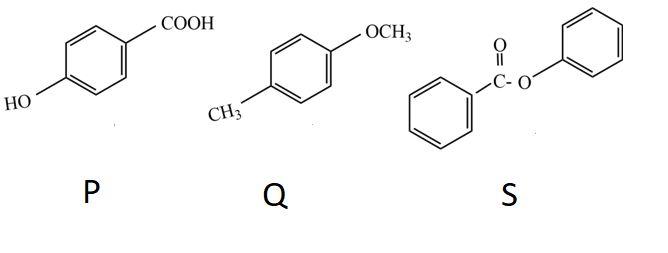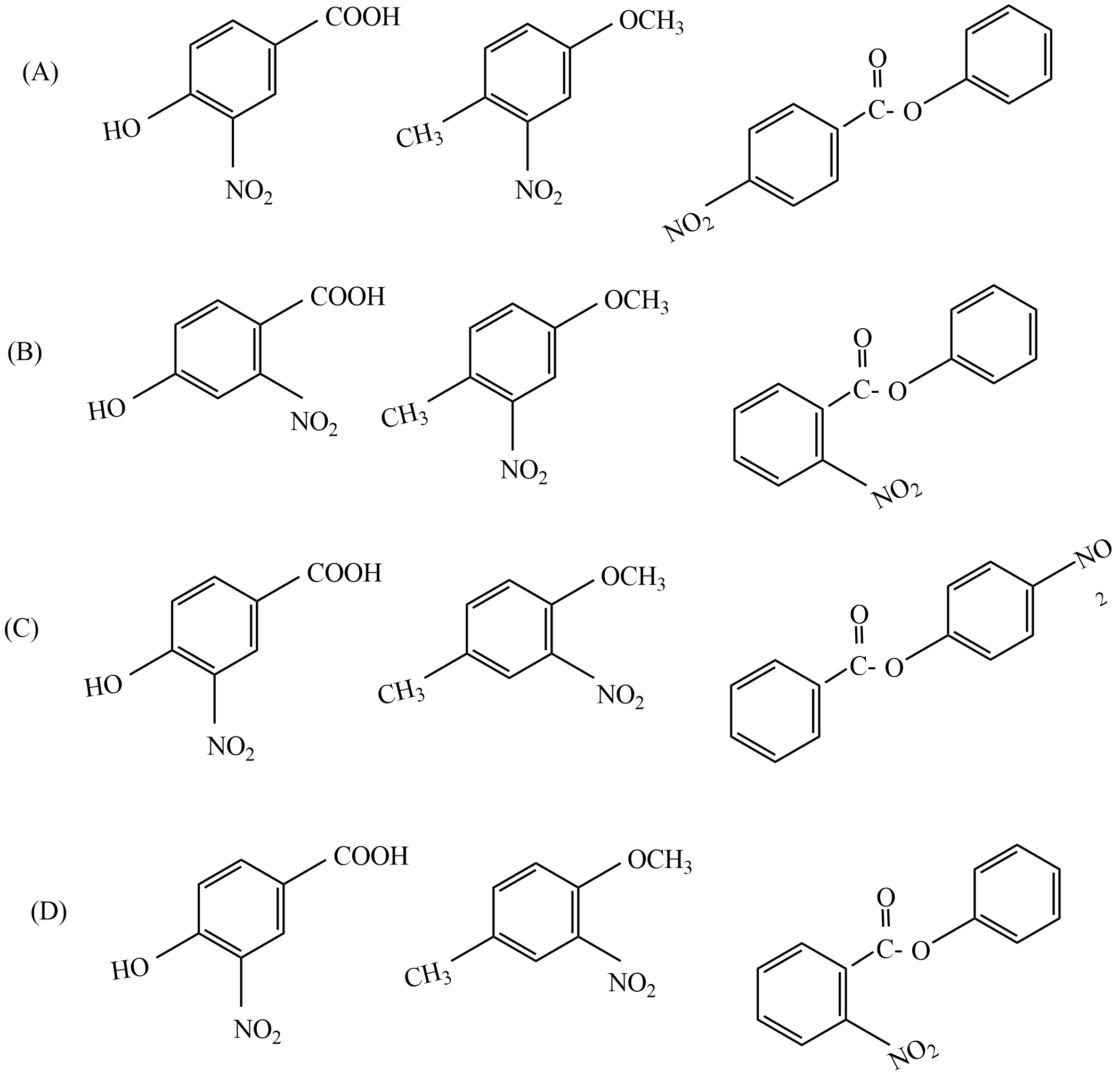Question
Question: The compound P, Q, and S were separately subjected to nitration using \(HN{{O}_{3}}/{{H}_{2}}S{{O}_{...
The compound P, Q, and S were separately subjected to nitration using HNO3/H2SO4 mixture. The major product formed in each case respectively is:


Solution
In a chemical reaction, the functional group attached to a compound is replaced by an electrophile, and then the reactions are known as electrophilic substitution reactions. The functional group which is replaced by a hydrogen atom is substituted in a chemical compound. Organic compounds involve two types of primary electrophilic substitution reactions which are electrophilic aromatic substitution and aliphatic substitution reactions.
Complete Solution :
Benzene ring involved in substitution reaction is two types based on the type of substituent that ring carries, which are activated rings and deactivated rings.
If the substituent on the ring which groups are donating electrons is an activated ring and group withdraws electrons is a deactivated ring.
Example of activating groups of decreasing order:
−NH2>−NR2>−OH>−OR>−NHCOR>−CH3
Example of deactivating groups with relative order from highest to lowest deactivating groups:
−NO2>−CF3>−COR>−CN>−COOR>−SO3H
The activating group in the benzene ring directs the reaction to the Ortho or Para position and the deactivating group in the benzene ring directs the reaction to the Meta position.
(i) When compound P reacted with HNO3/H2SO4 the mixture, the major product formed is,

-OH group is an activating group and –COOH deactivating group, hence electrophile attack to the ortho position of the activating group –OH.
(ii) When compound Q reacted with HNO3/H2SO4 the mixture, the major product formed is,

Both −OCH3 and −CH3 groups are activating groups which are directing Ortho or Para positions. But −OCH3 group is a strong activating group than −CH3 , so electrophile NO2− attacked to Ortho position.
(iii) When compound S reacted with HNO3/H2SO4 the mixture, the major product formed is,

The ring I, is deactivated and ring II is activated, hence electrophile attack at Para position of ring II which is a less hindered position.
So, the correct answer is “Option C”.
Note: An atom that is attached to an aromatic ring is replaced with an electrophile in a reaction is an electrophilic aromatic substitution reaction. Aromatic nitrations, aromatic sulfonation, and Friedel-Craft reactions are examples of this type of reaction. The aromaticity of aromatic compounds play an important role in electrophilic aromatic substitution reactions.
